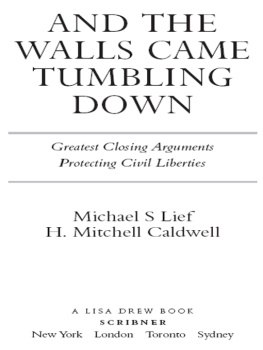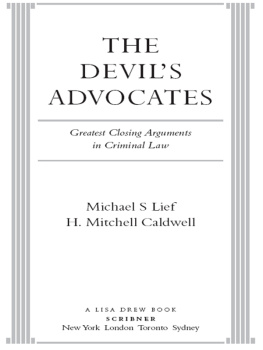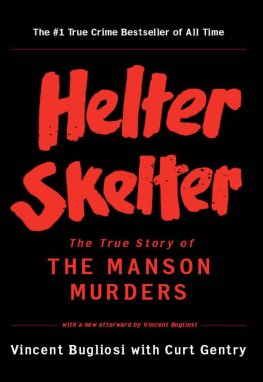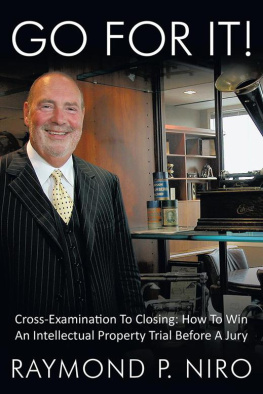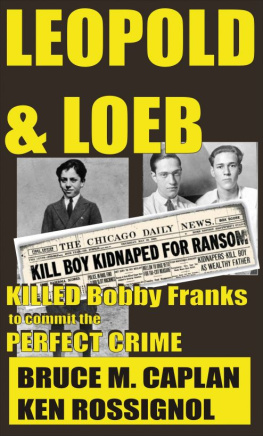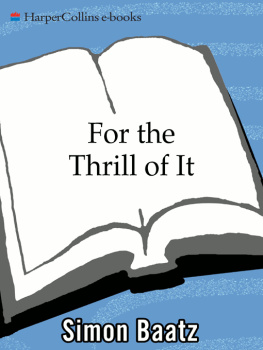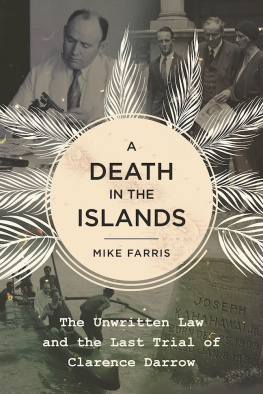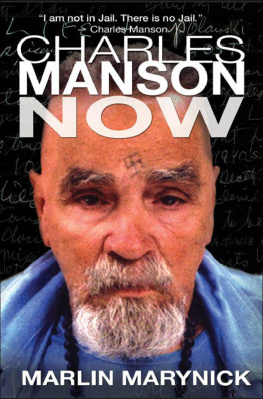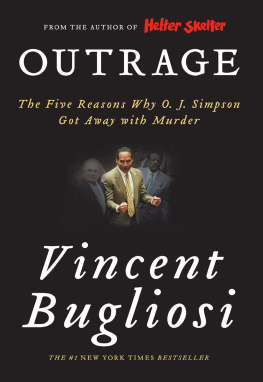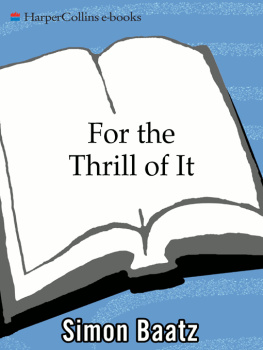
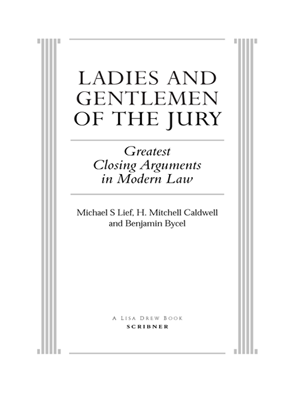

SCRIBNER
1230 Avenue of the Americas
New York, NY 10020
www.SimonandSchuster.com
Visit us on the World Wide Web: http://www.SimonSays.com
Copyright 1998 by Michael S Lief, Benjamin Bycel, and Harry Caldwell
All rights reserved, including the right of reproduction in whole or in part in any form.
SCRIBNER and design are trademarks of Simon & Schuster Inc.
A L ISA D REW B OOK is a trademark of Simon & Schuster Inc.
ISBN 0-684-86752-4
ISBN-13: 978-0-6848-6752-6
eISBN: 978-0-684-86752-6
This book is dedicated to our families:
For Joyce, Denise, Lee, Nicole, and EricH.M.C.
For Laura, Josh, and SarahB.B.
For my parents, Shirley and GeraldM.S L.
Acknowledgments
We are deeply indebted to the Honorable Bruce Einhorn, Senior U.S. Immigration Judge, Professor of Law Barbara Babcock of Stanford University, and Dean Geoffrey Cowan of the Annenberg School of Communications, for their invaluable assistance in the preparation of this book. Judge Einhorns vast expertise and experience in the prosecution of war criminals lent depth and perspective to the Nuremberg chapter. Likewise, Professor Babcock was most gracious and helpful in resurrecting the remarkable life and career of Clara Shortridge Foltz; but for her efforts, Foltzs story would have been lost. Finally, Dean Cowans exhaustive knowledge of all things darrow was graciously offered toand accepted bythe authors; the chapters on this famed litigator are the better for Cowans help. We would also like to thank Lee Jackson Caldwell for his time spent digging through dusty boxes and musty records at the National Archives in search of elusive trial transcrips.
The authors must also acknowledge the work of a number of Pepperdine law students who have assisted with the research over the years, first and foremost Robin Sax. Thank you all.
Contents
Chapter 1 Architects of Genocide
The Victorious Allies Put Hitlers Henchmen in the Defendants Box at Nremberg
Chapter 2 Darrow in the Docket
In a Time of Labor Unrest, Americas Greatest Litigator and Friend of the Workingman Fights for His Professional Life
Chapter 3 Disorder in the Court
The Trial of the Chicago Seven Pits the Establishment Against the Woodstock Generation
Chapter 4 Death by Plutonium
Fallout from Karen Silkwoods Death Brings the Nuclear Industry to Its Knees
Chapter 5 Leopold and Loeb
Spare Them, for They Know All Too Well What They Do
Chapter 6 A Mans World No More
Clara Shortridge Foltz Sends Shockwaves Through the Turn-of-the-Century Legal Establishment When She Becomes the First Woman to Do Battle in Californias Courts
Chapter 7 Peace, Love, and Murder
Manson Family Mastermind Sentenced to Die for Followers Murderous Rampage
Chapter 8 Justice Delayed but Not Denied
Three Trials and Thirty Years Later, Medgar Everss Assassin Pays the Piper
Chapter 9 Coke, Lies, and Videotape
The DeLorean Defense Team Convinces Jurors They Cant Trust Their EyesOr the Feds
Chapter 10 Baseball, Hot Dogs, Apple Pie, and My Lai
A Generation After Nremberg, Home-Grown War Criminals Claim They Were Just Following Orders When They Murdered an Entire Village
Introduction
An advocate can be confronted with few more formidable tasks than to select his closing arguments.
Robert H. Jackson, chief counsel for the United States at the Nuremberg Trial, 1946
How does a trial advocate manage in just a few hours to summarize months of testimony and documentary evidence, transforming it into a compelling story that will persuade the jurorsand win the case?
The closing argument is the lawyers final opportunity to give perspective, meaning, and context to the evidence introduced throughout a lengthy trial. It is the last chance for the lawyer to forcefully communicate his position to the jury, to convince them why his version of the truth is correct.
Every argument here is a finely crafted verbal work of art. Remember, closing arguments are heardnot readby the jurors. Because of this, they represent the modern-day, highest form of an ancient profession and art: that of the storyteller. Like the wandering bards of yore, the attorney must command the attention of the courtroom. He must use every psychological and emotional tool at his command to tell his clients story. The advocate must use his summation to touch not just the intellect of the jurors, but also their emotions. But there is one vital difference between yesterdays storytellers and todays advocates. Where the bard sat at the foot of the king and entertained, the lawyers storytelling has the power to put evil men to death, to free the innocent, and to make whole the injured. Such is the power of the words, the tale, the closing argument.
The purpose of this book is to present to the reader a selection of the finest closing arguments in American history. The authors are acutely aware that for every closing argument presented in the book, there are countless others, many by unknown attorneys in little-known cases, that rival the ones we selected. Each of the summations weve chosen for inclusion share common themes and presentations.
Each case was selected for the quality of its summation, as well as for its historical significance. A deliberate effort has been made to exclude those that achieve fleeting fameor notoriety. We have concentrated instead on trials that have withstood the test of time, that will continue to fascinate and educate decades after the verdicts were read. These are trials that hold men responsible for war crimes, take the nuclear power industry to task, demand equal rights for women, and prove that the mere passage of time will not excuse the deeds of a killer.
It may well beand in fact probably isterribly presumptuous of us to choose the ten greatest arguments. Of necessity, we limited our prospective list to noteworthy trials. Then the trial record had to be available; unfortunately, this has not always been the case. Astonishingly, the transcripts of some of the most noteworthy trials have simply disappeared. And finally, the closing argument must have been terrific.
Certain trials that the reader might expect to find are not represented, and are conspicuous by their absence. The Scopes Monkey Trial, pitting Clarence Darrow against William Jennings Bryan, cannot appear, because these two courtroom legends agreed not to make closing arguments in that case.
Sorely missed in this work is Louis Nizer, who for more than thirty years was without peer before a jury. Transcripts of his closing arguments simply cant be found.
The book is organized in the following manner. Each chapter contains a brief historical introduction which places the case in a social, historical context. Along with the introduction is a biographical sidebar about the lawyer who delivered the closing. This is followed by an analysis of the argument, focusing on notable aspects of the close, and then the argument itself.
Most of the arguments have been edited, some more, some less. It is our thought that occasionally an argument will go into very specific factual detail, more than is necessary for us to appreciate its brilliance. With that exception, we have taken nothing out. And, of course, nothing has been added.
Next page

